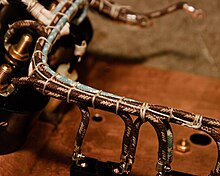Peter R
VIP MEMBER
- Joined
- Dec 13, 2010
- Messages
- 516
I fully agree with poster Nickguzzi, that sticky tape should not be used when making a wiring loom.
The result will be that the entire loom will become a sticky mess over time, that attracts dirt etc.
Also, where many home made wiring looms fall short is that inadequate crimping tools are used.
Good quality crimping tools are fairly expensive, but the result will be worth the costs.
Also, soldered connections are best avoided, in particular in vibraton prone areas,
this is why soldered connections are rarely used in the aviation industry.
Those who complain about the quality of Lucas electrics should take a close look at Italian bikes.
Lucas stuff looks like masterpieces of engineering compared to CEV or Magneti Marelli stuff.
However, I think that we can't put the blame entirily on the manufacturers of the electrical equipment for producing poor quality stuff.
These suppliers were under constant pressure from the motor industry to make their products as cheap as possible,
and that's why we have to put up with carburators made of zinc, and marginal electrical equipment etc.
In the British motorcycle industry, the bean counters always won from the technicians, we still suffer today from the result.
The result will be that the entire loom will become a sticky mess over time, that attracts dirt etc.
Also, where many home made wiring looms fall short is that inadequate crimping tools are used.
Good quality crimping tools are fairly expensive, but the result will be worth the costs.
Also, soldered connections are best avoided, in particular in vibraton prone areas,
this is why soldered connections are rarely used in the aviation industry.
Those who complain about the quality of Lucas electrics should take a close look at Italian bikes.
Lucas stuff looks like masterpieces of engineering compared to CEV or Magneti Marelli stuff.
However, I think that we can't put the blame entirily on the manufacturers of the electrical equipment for producing poor quality stuff.
These suppliers were under constant pressure from the motor industry to make their products as cheap as possible,
and that's why we have to put up with carburators made of zinc, and marginal electrical equipment etc.
In the British motorcycle industry, the bean counters always won from the technicians, we still suffer today from the result.

